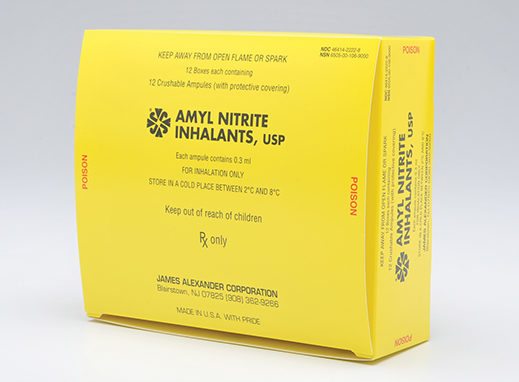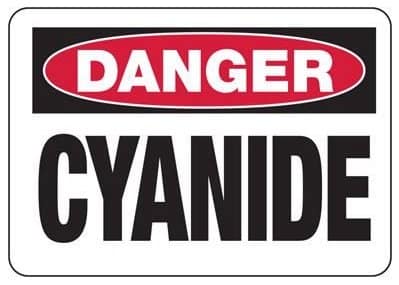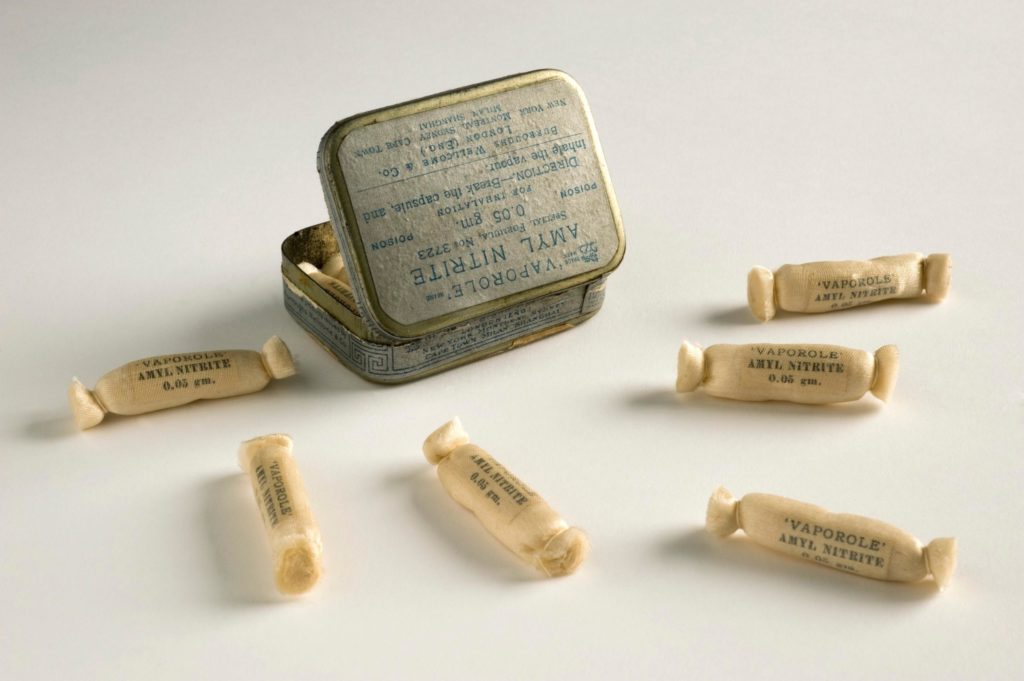
Is amyl nitrite a useful prehospital intervention in cyanide poisoning?
- Posted by Mike Shertz MD/18D
- Categories Tactical CBRN
🕖 Reading Time, 4 minutes
Amyl nitrite is a highly flammable, volatile, liquid medication that is proposed as a prehospital inhalation treatment of cyanide casualties while awaiting parenteral (IV / IO) access.
BLUF: In a high-risk tactical environment with both cyanide poisoned and traumatically wounded casualties, amyl nitrite’s flammable nature, need for refrigeration (it should be kept below 59F or 15C), inability to use in already hypotensive patients, contra-indication in smoke inhalation casualties, as well as poor survival record, would indicate it is not a practical treatment choice.
Cyanide was first used in warfare by the French in 1916, during WW1. Ultimately France produced 8 million tons of hydrogen cyanide. With its low vapor density and diffusibility, cyanide doesn’t persist like of other chemical warfare agents.1
Additionally, it is about the only agent that is lighter than air. Because of these properties, cyanide isn’t an effective agent on the battlefield as it dissipates too rapidly. However, it could be used in enclosed spaces, like inside buildings.

Amyl nitrite was first proposed as an antidote for cyanide poisoning in 1888.2 Since that time “no satisfying experimental investigation has been presented” establishing definite evidence of a therapeutic benefit.3

One of the first studies claiming a benefit to inhalational amyl nitrite treatment was published in 1933. In that study 4 out of 9 cyanide poisoned, but untreated, dogs survived, whereas 6 of 10 treated animals survived. Although the authors wrote this was a definite survival benefit, others have considered this result largely equal survival in both groups, thereby raising the question of whether inhalational amyl nitrite actually benefits.4
We are still left with the question of whether amyl nitrite is even effective for cyanide casualties. In a more recent study of seven dogs poisoned with cyanide, only 3 treated with amyl nitrite survived initially, and ultimately only one survived six days.3
Traditional theory has been that amyl nitrite generates methemoglobinemia as its mechanism for treatment. Newer research suggests the possibility its effects are caused by the generation of nitric oxide, which is a potent vasodilator. Because the prevailing assumption is it causes methemoglobinemia, it shouldn’t be given to smoke inhalation victims as they may already have carboxyhemoglobinemia.
Amyl nitrite also decreases mean arterial pressure with studies showing diastolic blood pressure drops from 75 to 60 mmHg and simultaneous heart rate increases from 75 to 110 beats per minute.5 This effect has led to an argument that you shouldn’t provide amyl nitrite to hypotensive casualties either.
Amyl nitrite also lowers oxygen levels, increases CO2 levels, and decreases pH, at least initially in experimental animals.3
What does all this mean for the treatment of the cyanide casualty with amyl nitrite? Although there are case reports of successful use,6 the bulk of the literature questions whether it is beneficial.
NOTES:
1Bebarta VS, Brittain M, Chan A, Garrett N, Yoon D, Burney T, Mukai D, Babin M, Pilz RB, Mahon SB, Brenner M, Boss GR. Sodium Nitrite and Sodium Thiosulfate Are Effective Against Acute Cyanide Poisoning When Administered by Intramuscular Injection. Ann Emerg Med. 2017 Jun;69(6):718-725.
2Pedigo LG, Antagonism between amyl nitrite and prussic acid. Tr M Soc Virginia 1888; 19:124-131.
3Klimmek R, Krettek C. Effects of amyl nitrite on circulation, respiration and blood homoeostasis in cyanide poisoning. Arch Toxicol. 1988;62(2-3):161-6.
4Chen KK, Rose L, Amyl nitrite and cyanide poisoning. JAMA 1933; 100 (1920 -1922).
5Lavon O, Bentur Y. Does amyl nitrite have a role in the management of pre-hospital mass casualty cyanide poisoning? Clin Toxicol (Phila). 2010 Jul;48(6):477-84.
6Wurzburg H. Treatment of cyanide poisoning in an industrial setting. Vet Hum Toxicol. 1996 Feb;38(1):44-7.
Dr. Mike Shertz is the Owner and Lead Instructor at Crisis Medicine. Dr. Shertz is a dual-boarded Emergency Medicine and EMS physician, having spent over 30 years gaining the experience and insight to create and provide his comprehensive, science-informed, training to better prepare everyday citizens, law enforcement, EMS, and the military to manage casualties and wounded in high-risk environments. Drawing on his prior experience as an Army Special Forces medic (18D), two decades as an armed, embedded tactical medic on a regional SWAT team, and as a Fire Service and EMS medical director.
Using a combination of current and historical events, Dr. Shertz’s lectures include relevant, illustrative photos, as well as hands-on demonstrations to demystify the how, why, when to use each emergency medical procedure you need to become a Force Multiplier for Good.



